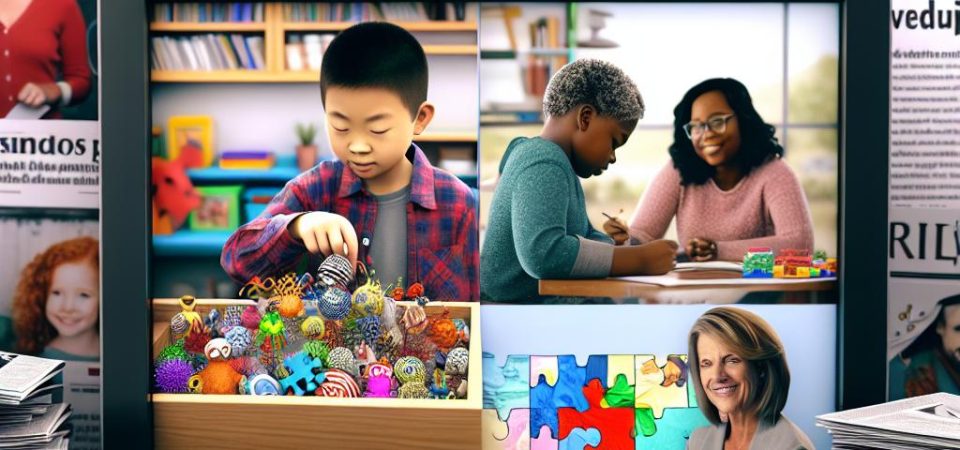Understanding Media Representation of Autism
The depiction of autism within various media platforms has undergone substantial transformation over the years. This shift aligns with a broader societal movement towards a deeper awareness of autism spectrum disorder (ASD). As media are influential in shaping cultural norms and perceptions, it becomes crucial to assess both the significant improvements and the continuing challenges in media portrayals of autism. The goal is to ensure these representations reflect the authentic and diverse experiences of individuals on the spectrum.
The Early Depictions of Autism
Historically, autism in media was often shrouded in mystery and sometimes melodrama, tending to highlight extreme cases. In earlier portrayals, autistic individuals were either depicted as savants with extraordinary talents or as being entirely disconnected from society. Movies and television frequently emphasized the struggles encountered by families and communities, presenting autism as a burden or a challenge rather than showcasing a balanced perspective. This approach tended to overshadow the variety of experiences that exist on the autism spectrum, focusing on the difficulties rather than the capabilities or personal stories of those living with ASD.
Media portrayals during this time also lacked input from individuals with autism or those who intimately understood the condition. This resulted in narratives that were often based on outdated information or cultural myths rather than on scientific understanding or personal experiences.
The Shift Toward More Accurate Representations
In recent years, there has been a conscious shift towards more accurate and diverse portrayals of autism in media. This has involved an expansion beyond one-dimensional characters, allowing audiences to gain a richer understanding of how autism affects individuals differently. This broader representation reflects a growing acknowledgment of ASD as a spectrum that encompasses a wide array of behaviors and abilities.
Contemporary media, such as the television series “Atypical,” delve into the life of a teenager navigating the complexities of being autistic. The show’s narrative extends beyond the individual’s experiences to include family dynamics, which provides a multi-faceted view of autism’s impact. Similarly, series like “Parenthood” explore the day-to-day realities of a young boy with Asperger’s syndrome, offering insights into both the challenges and the triumphs associated with living with autism. These portrayals highlight personal growth, family support systems, and societal interactions, contributing to a more balanced understanding.
The Role of Advocacy and Awareness
A pivotal factor in the evolution of autism representation in the media is the growing influence of advocacy groups and awareness initiatives. Organizations such as Autism Speaks and the Autistic Self Advocacy Network (ASAN) have been instrumental in promoting informed and respectful portrayals of autism. They actively challenge existing stereotypes and encourage content creators to involve autistic individuals and experts during the content creation process.
These advocacy groups work tirelessly to combine authentic stories with scientific insights, pushing for representations that align with contemporary understandings of autism. Such collaboration has paved the way for more genuine narratives in media, ensuring that the portrayals are neither patronizing nor stereotypical, but rather representative of real-life experiences.
Media’s Impact on Public Perception
The media’s portrayal of autism significantly shapes public perception, which in turn impacts societal behaviors and policies. Accurate representations can foster understanding and acceptance, serving as educational tools that dismantle myths and promote inclusivity. On the other hand, negative or skewed portrayals can cement misconceptions, marginalize autistic individuals, and perpetuate stigma.
Media representation influences more than individual attitudes; it can affect public policy decision-makers, research funding priorities, and broader cultural attitudes about inclusion and diversity. It underscores the power of informed storytelling as a tool for social change and the importance of continued advocacy and education.
The Importance of Diverse Voices
To achieve meaningful representation, it is essential for media creators to engage directly with autistic individuals. By incorporating the voices, insights, and perspectives of those on the spectrum, media can craft narratives that are authentic and respectful. Employing autistic writers, actors, and consultants allows for stories that resonate with truth and promote empathy and understanding.
Such collaboration ensures that the portrayals do not merely echo prevailing stereotypes but rather celebrate the diversity within the spectrum. This approach encourages inclusive storytelling that honors individual experiences and challenges the dominant narratives that have historically marginalized autistic perspectives.
For detailed information on ongoing advocacy efforts and industry best practices, resources such as the Autism Speaks website offer valuable guidance, further reading, and support tools for media creators and consumers alike.
In conclusion, while the evolution of media representations of autism has been significant, there remains work to be done. By continuing to challenge stereotypes and including a range of voices, media can enhance society’s understanding of autism, facilitating greater acceptance and inclusion. The path forward involves continuous collaboration between advocates, creators, and individuals with autism, ensuring that media serves not just to entertain or inform, but to engage and educate in meaningful ways.
